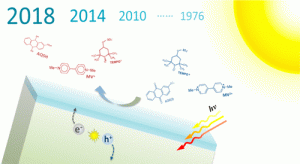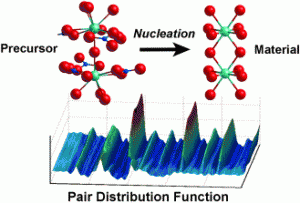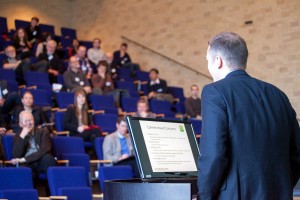Abstract: In recent years, research in solar energy storage with photoelectrochemical cells (i.e., solar redox flow batteries: SRFBs) has resurged. This development is emerging in parallel with the growing field of research into organic redox couples intended for aqueous redox flow batteries (RFBs) in a range of different pH environments. In a solar flow battery, the …
Tag: AU
Permanent link to this article: http://batteriselskab.dk/artikel/videnskabelig/solar-redox-flow-batteries-with-organic-redox-couples-in-aqueous-electrolytes-a-minireview.htm
Redox flow batteries at Danish Battery Symposium 2018
At the Danish Battery Symposium 2018 we will put significant focus on redox-flow batteries that due to the inherent independent scalability of the power and energy is of particular interest for large scale storage of energy. We have invited group leader of the Redox Flow Battery Group at Fraunhofer Institute for Chemical Technology Dr. Peter …
Permanent link to this article: http://batteriselskab.dk/arrangementer/praesentationer/redox-flow-batteries-at-danish-battery-symposium-2018.htm
Novel low cost redox species for solid state and flow batteries
A group under the Engineering department at Aarhus University is working with solid state and flow batteries. This article is a description of the groups focus and accomplishments. Introduction and focus Our group aims at developing technology for future low cost storage of energy. The technology of choice is stationary batteries for storage of renewable electricity that …
Permanent link to this article: http://batteriselskab.dk/artikel/novel-low-cost-redox-species-for-solid-state-and-flow-batteries-at-au.htm
First came the material
“It is very easy to make a bad battery out of a good material, but it is impossible to make a good battery out of a bad material.” This truth underlines the universal position of materials chemistry in battery science. In simple terms one may say that at the core of every energy technology there …
Permanent link to this article: http://batteriselskab.dk/arrangementer/praesentationer/first-came-the-material.htm
Danish Battery Symposium 2015
The second annual symposium in the Danish Battery Society is hosted by Ålborg university and focus on current and future battery activities in Denmark with updates from research and industry. The agenda is available here, and presentations will, among others, cover: Battery assembling and packs Electrical luxury golf and leisure cars Battery material synthesis …
Permanent link to this article: http://batteriselskab.dk/arrangementer/danish-battery-symposium-2015.htm
In situ study of hydrothermal formation of spinel type LiMn2O4 nanocrystals
Solvothermal reactions have been shown to be a good way to synthesize nanocrystalline materials. Many properties of the product, such as phase composition, crystallite size, morphology and crystallinity, can be controlled by changing and controlling synthesis conditions, such as reaction temperature, heating rate, reaction time, precursor concentration and pH. Ex situ investigation of the effect …
Permanent link to this article: http://batteriselskab.dk/arrangementer/praesentationer/in-situ-study-of-hydrothermal-formation-of-spinel-type-limn2o4-nanocrystals.htm
Introduction and TiO2
General introduction to the battery group at Aarhus University and description of how they take advantage of a closely integrated feedback loop between synthesis, structure characterization and electrochemical properties. The battery test cells used in the group is described, including the in-situ split flat cell used to do in-situ XRD tests. Check out the presentation here
Permanent link to this article: http://batteriselskab.dk/arrangementer/praesentationer/introduction-and-tio2.htm
Battery activities at AU: Hydrothermal synthesis of battery materials
Recently, the development of hybrid and electrical vehicles and energy storage devices has raised the requirement on high–rate ability, safety and cyclability of lithium ion batteries. Use of carefully structured nanosized electrode materials is an effective approach to improve the high–rate ability. The AU battery activities focus on nanosized materials, and battery materials are synthesized …
Permanent link to this article: http://batteriselskab.dk/arrangementer/praesentationer/battery-activities-at-au-hydrothermal-synthesis-of-battery-materials.htm






